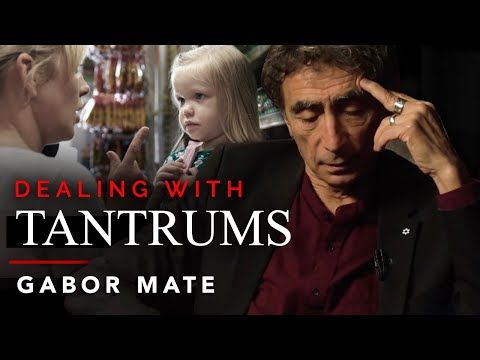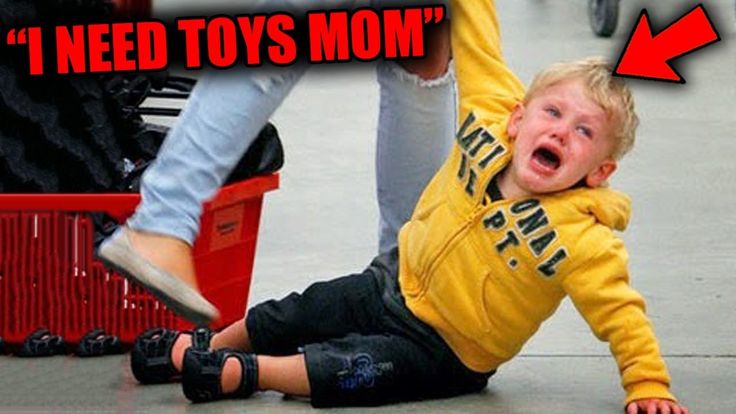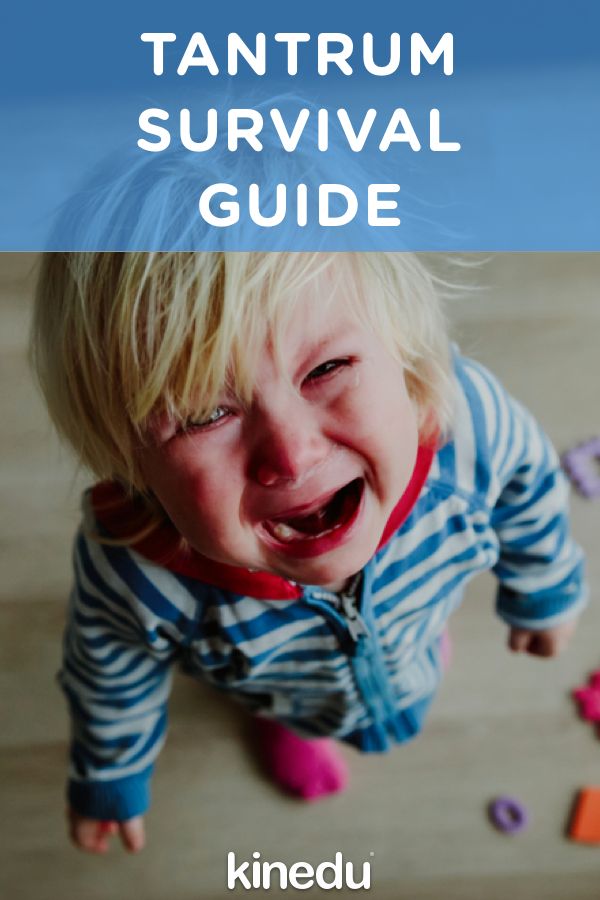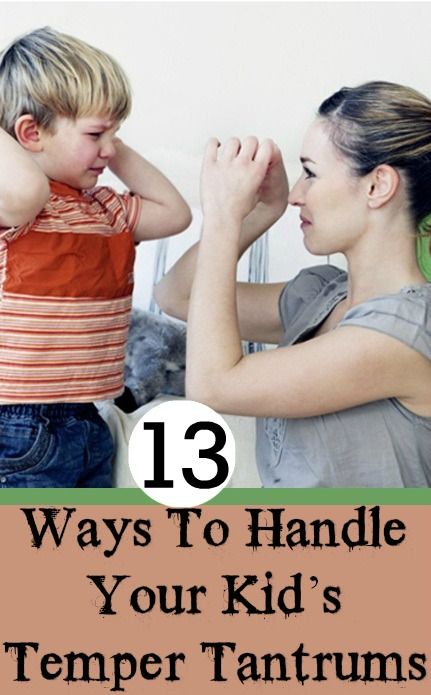How to deal with child tantrum
How to Handle Child Tantrums and Meltdowns | Behavior Problems
The first thing we have to do to manage tantrums is to understand them. That is not always as easy as it sounds, since tantrums and meltdowns are generated by a lot of different things: fear, frustration, anger, sensory overload, to name a few. And since a tantrum isn’t a very clear way to communicate (even though it may be a powerful way to get attention), parents are often in the dark about what’s driving the behavior.
It’s useful to think of a tantrum as a reaction to a situation a child can’t handle in a more grown-up way—say, by talking about how he feels, or making a case for what he wants, or just doing what he’s been asked to do. Instead he is overwhelmed by emotion. And if unleashing his feelings in a dramatic way — crying, yelling, kicking the floor, punching the wall, or hitting a parent — serves to get him what he wants (or out of whatever he was trying to avoid), it’s a behavior that he may come to rely on.
That doesn’t mean that tantrums are consciously willful, or even voluntary. But it does mean that they’re a learned response. So the goal with a child prone to tantrums is to help him unlearn this response, and instead learn other, more mature ways to handle a problem situation, like compromising, or complying with parental expectations in exchange for some positive reward.
Make an assessment
The first step is to get a picture of what triggers your particular child’s tantrums. Mental health professionals call this a “functional assessment,” which means looking at what real-life situations seem to generate tantrums — specifically, at what happens immediately before, during, and after the outbursts that might contribute to their happening again.
Sometimes a close look at the pattern of a child’s tantrums reveals a problem that needs attention: a traumatic experience, abuse or neglect, social anxiety, ADHD, or a learning disorder. When children are prone to meltdowns beyond the age in which they are typical, it’s often a symptom of distress that they are struggling to manage. That effort breaks down at moments that require self-discipline they don’t yet have, like transitioning from something they enjoy to something that’s difficult for them.
That effort breaks down at moments that require self-discipline they don’t yet have, like transitioning from something they enjoy to something that’s difficult for them.
“A majority of kids who have frequent meltdowns do it in very predictable, circumscribed situations: when it’s homework time, bedtime, time to stop playing,” explains Vasco Lopes, PsyD, a clinical psychologist. “The trigger is usually being asked to do something that’s aversive to them or to stop doing something that is fun for them. Especially for children who have ADHD, something that’s not stimulating and requires them to control their physical activity, like a long car ride or a religious service or visiting an elderly relative, is a common trigger for meltdowns.”
Learned behavior
Since parents often find tantrums impossible to tolerate—especially in public—the child may learn implicitly that throwing a tantrum can help him get his way. It becomes a conditioned response. “Even if it only works five out of 10 times that they tantrum, that intermittent reinforcement makes it a very solid learned behavior,” Dr. Lopes adds. “So they’re going to continue that behavior in order to get what they want.”
Lopes adds. “So they’re going to continue that behavior in order to get what they want.”
One of the goals of the functional assessment is to see if some tantrum triggers might be eliminated or changed so they’re not as problematic for the child. “If putting on the child’s shoes or leaving for school is the trigger, obviously we can’t make it go away,” explains Steven Dickstein, MD, who is both a pediatrician and child and adolescent psychiatrist. But sometimes we can change the way parents and other caregivers handle a situation — to defuse it. This could translate into giving kids more warning that a task is required of them, or structuring problematic activities in ways that reduce the likelihood of a tantrum.
“Anticipating those triggers, and modifying them so that it’s easier for the child to engage in that activity is really important,” says Dr. Lopes. “For example, if homework is really difficult for a child, because she has underlying attention, organization or learning issues, she might have outbursts right before she’s supposed to start her homework. So we say to parents, ‘How can we make doing homework more palatable for her?’ We can give her frequent breaks, support her in areas she has particular difficulty with, organize her work, and break intimidating tasks into smaller chunks.”
So we say to parents, ‘How can we make doing homework more palatable for her?’ We can give her frequent breaks, support her in areas she has particular difficulty with, organize her work, and break intimidating tasks into smaller chunks.”
Another goal is to consider whether the expectations for the child’s behavior are developmentally appropriate, Dr. Dickstein notes, for his age and his particular level of maturity. “Can we modify the environment to make it match the child’s abilities better, and foster development towards maturing?”
It’s important for parents to understand two things: first of all, avoiding a tantrum before it begins does not mean “giving in” to a child’s demands. It means separating the unwanted tantrum response from other issues, such as compliance with parental requests. And second, by reducing the likelihood of a tantrum response, you are also taking away the opportunity for reinforcement of that response. When kids don’t tantrum, they learn to deal with needs, desires, and setbacks in a more mature way, and that learning itself reinforces appropriate responses. Fewer tantrums now means…fewer tantrums later.
Fewer tantrums now means…fewer tantrums later.
Responding to tantrums
When tantrums occur, the parent or caregiver’s response affects the likelihood of the behavior happening again. There are lots of very specific protocols to help parents respond consistently, in ways that will minimize tantrum behavior later. They range from Ross Greene’s seminal approach, Collaborative & Proactive Solutions, to step-by-step parent-training programs like Parent-Child Interaction Therapy and Parent Management Training. They have in common the starting point that parents resist the temptation to end the tantrum by giving the child what he wants when he tantrums. For outbursts that aren’t dangerous, the goal is to ignore the behavior, to withdraw all parental attention, since even negative attention like reprimanding or trying to persuade the child to stop has been found positively reinforce the behavior.
Attention is withheld from behavior you want to discourage, and lavished instead on behaviors you want to encourage: when a child makes an effort to calm down or, instead of tantruming, complies or proposes a compromise. “By positively reinforcing compliance and appropriate responses to frustration,” says Dr. Lopes, “you’re teaching skills and—since you can’t comply with a command and tantrum at the same time—simultaneously decreasing that aggressive noncompliant tantrum behavior.”
“By positively reinforcing compliance and appropriate responses to frustration,” says Dr. Lopes, “you’re teaching skills and—since you can’t comply with a command and tantrum at the same time—simultaneously decreasing that aggressive noncompliant tantrum behavior.”
One thing you don’t want to do is try to reason with a child who is upset. As Dr. Dickstein puts it, “Don’t talk to the kid when he’s not available.” You want to encourage a child to practice at negotiation when he’s not blowing up, and you’re not either. You may need to teach techniques for working through problems, break them down step by step for kids who are immature or have deficits in this kind of thinking and communication.
Modeling calm behavior
And you need to model the kind of negotiation you want your child to learn. “Parents should take time outs, too,” notes Dr. Dickstein. ” When you get really angry you need to just take yourself out of the situation. You can’t problem solve when you’re upset—your IQ drops about 30 percent when you are angry. ”
”
Being calm and clear about behavioral expectations is important because it helps you communicate more effectively with a child. “So it’s not, ‘You need to behave today,’” Dr. Lopes says. “It’s, ‘You need to be seated during mealtime, with your hands to yourself, and saying only positive words.’ Those are very observable, concrete things that the child knows what’s expected and that the parent can reinforce with praise and rewards.”
Both you and your child need to build what Dr. Dickstein calls a toolkit for self-soothing, things you can do to calm down, like slow breathing, to relax, because you can’t be calm and angry at the same time. There are lots of techniques, he adds, but “The nice thing about breathing is it’s always available to you.”
Frequently Asked Questions
How can parents deal with toddler tantrums?To deal with toddler tantrums, first try to identify the things that might trigger these tantrums and remove them from the child’s environment. During a tantrum, the goal is to ignore the behavior and withdraw all attention, so the child learns that tantrums won’t get them what they want.
During a tantrum, the goal is to ignore the behavior and withdraw all attention, so the child learns that tantrums won’t get them what they want.
To handle a child having a meltdown, try to ignore the behavior and withdraw all parental attention, since even negative attention like reprimanding or persuasion has been found to positively reinforce the behavior.
How can parents stop tantrums?To stop tantrums, parents can identify and remove things that may trigger a tantrum, ignore active meltdowns, give kids attention and praise when they compromise, and model calm behavior.
Temper Tantrums (for Parents) - Nemours KidsHealth
Temper tantrums can be frustrating for any parent. But instead of looking at them as disasters, treat tantrums as opportunities for education.
Why Do Kids Have Tantrums?
Temper tantrums range from whining and crying to screaming, kicking, hitting, and breath-holding spells. They're equally common in boys and girls and usually happen between the ages of 1 to 3.
They're equally common in boys and girls and usually happen between the ages of 1 to 3.
Some kids may have tantrums often, and others have them rarely. Tantrums are a normal part of child development. They're how young children show that they're upset or frustrated.
Tantrums may happen when kids are tired, hungry, or uncomfortable. They can have a meltdown because they can't have something they want (like a toy or candy) or can’t get someone to do what they want (like getting a parent to pay attention to them immediately or getting a sibling to give up the tablet). Learning to deal with frustration is a skill that children gain over time.
Tantrums are common during the second year of life, when language skills are developing. Because toddlers can't always say what they want or need, and because words describing feelings are more complicated and develop later, a frustrating experience may cause a tantrum. As language skills improve, tantrums tend to decrease.
Toddlers want independence and control over their environment — more than they can actually handle. This can lead to power struggles as a child thinks "I can do it myself" or "I want it, give it to me." When kids discover that they can't do it and can't have everything they want, they may have a tantrum.
This can lead to power struggles as a child thinks "I can do it myself" or "I want it, give it to me." When kids discover that they can't do it and can't have everything they want, they may have a tantrum.
How Can We Avoid Tantrums?
Try to prevent tantrums from happening in the first place, whenever possible. Here are some ideas that may help:
- Give plenty of positive attention. Get in the habit of catching your child being good. Reward your little one with praise and attention for positive behavior. Be specific about praising behaviors you want to see happen more often (such as, “I like the way you said please and waited for your milk” or “Thank you for sharing the blocks with your sister.”)
- Try to give toddlers some control over little things. Offer minor choices such as "Do you want orange juice or apple juice?" or "Do you want to brush your teeth before or after taking a bath?" This way, you aren't asking "Do you want to brush your teeth now?" — which of course will be answered "no.
 " Allow control when it doesn’t really matter. Instead of struggling over an outfit your child puts on that doesn’t match, for example, consider whether this may be an opportunity to allow self-expression and independence and if it really makes a difference given the day's schedule.
" Allow control when it doesn’t really matter. Instead of struggling over an outfit your child puts on that doesn’t match, for example, consider whether this may be an opportunity to allow self-expression and independence and if it really makes a difference given the day's schedule. - Keep off-limits objects out of sight and out of reach. This makes struggles less likely. Obviously, this isn't always possible, especially outside of the home where the environment can't be controlled.
- Distract your child. Try offering something else in place of what they can't have. Start a new activity to replace the frustrating or forbidden one (for example, if your child is jumping on the couch, ask them to come help you “cook” by offering a plastic container and wooden spoon. Then you can praise them for helping or following directions, rather than having them start a tantrum or refuse to get down). Or simply change the environment. Take your toddler outside or inside or move to a different room.

- Help kids learn new skills and succeed. Help kids learn to do things. Praise them to help them feel proud of what they can do. Also, start with something simple before moving on to more challenging tasks.
- Consider the request carefully when your child wants something. Is it outrageous? Maybe it isn't. Choose your battles. It's even OK to change your mind if you originally said no — but find a way to allow the desired treat as a reward for good behavior.
- Know your child's limits. If you know your toddler is tired, it's not the best time to go grocery shopping or try to squeeze in one more errand. Hungry kids are more likely to demand food in the store than children who have just had a meal (just like adults!).
What Should I Do During a Tantrum?
Keep your cool when responding to a tantrum. Don't complicate the problem with your own frustration or anger. Remind yourself that your job is helping your child learn to calm down. So you need to be calm too.
So you need to be calm too.
Tantrums should be handled differently depending on why your child is upset. Sometimes, you may need to provide comfort. If your child is tired or hungry, it's time for a nap or a snack. Other times, its best to ignore an outburst or distract your child with a new activity.
If a tantrum is happening to get attention from parents, one of the best ways to reduce this behavior is to ignore it. If a tantrum happens after your child is refused something, stay calm and don't give a lot of explanations for why your child can't have what they want. Move on to another activity with your child.
If a tantrum happens after your child is told to do something they don't want to do, it's best to ignore the tantrum. But be sure that you follow through on having your child complete the task after they're calm.
Kids who are in danger of hurting themselves or others during a tantrum should be taken to a quiet, safe place to calm down. This also applies to tantrums in public places.
If a safety issue is involved and a toddler repeats the forbidden behavior after being told to stop, use a time-out by sitting the child on a designated chair or in the corner for just a few minutes. Be nearby so that you can supervise, but do not interact until they are calm. Be consistent. Don't give in on safety issues.
Preschoolers and older kids are more likely to use tantrums to get their way if they've learned that this behavior works. For school-age kids, it's appropriate to send them to their rooms to cool off while paying little attention to the behavior.
Let your child know that you will tell them when the time-out is over and that the sooner they are calm and quiet, the sooner it will end. This is empowering — kids can affect the outcome by their own actions, and thus gain a sense of control that was lost during the tantrum.
Do not reward your child's tantrum by giving in. This will only prove to your little one that the tantrum was effective.
Consider making a “chill out” or “calm down” spot in your home (some teachers use this in preschool, as well). Use a soft cushion and provide books, a stuffed animal, some soft music, and other calming activities in a place where others won’t disturb the child. Encourage your child to go to the spot when angry or upset — not as a punishment, but as a choice and an opportunity to learn to calm down and control frustration.
What Should I Do After a Tantrum?
Praise your child for regaining control — for example, "I like how you calmed down."
Kids may be especially vulnerable after a tantrum when they know they've been less than adorable. Now (when your child is calm) is the time for a hug and reassurance that your child is loved, no matter what. If your child is old enough to discuss the problem, help them come up with some other ways they might have expressed their frustration.
Make sure your child gets enough sleep. With too little sleep, kids can become hyper, disagreeable, and have extremes in behavior. Getting enough sleep can greatly reduce tantrums. Find out how much sleep is needed at your child’s age. Most kids' sleep needs fall within a set range of hours based on their age, but each child is unique.
Getting enough sleep can greatly reduce tantrums. Find out how much sleep is needed at your child’s age. Most kids' sleep needs fall within a set range of hours based on their age, but each child is unique.
When Should I Call the Doctor?
Talk to your doctor if:
- You often feel angry or out of control when you respond to tantrums.
- You keep giving in to try to avoid your child acting out.
- The tantrums cause a lot of bad feelings between you and your child or you and your partner.
- The tantrums happen more often, are more intense, or last longer.
- Your child often self-harms or hurts others.
- Your child seems very disagreeable, argues a lot, and hardly ever cooperates.
Your doctor also can check for any health problems that may add to the tantrums, although this is not common. Sometimes, hearing or vision problems, a chronic illness, language delays, or a learning disability can make kids more likely to have tantrums.
Remember, tantrums usually aren't cause for concern and generally stop on their own. As kids mature, they gain self-control. They learn to cooperate, communicate, and cope with frustration. Less frustration and more control will mean fewer tantrums — and happier parents.
How to cope with a child's tantrum: advice from a psychologist
Even the most obedient and quiet child must have at least once unpleasantly surprised his parents with a tantrum. Screaming, growing crying, swearing and aggression towards an adult in the form of bites and pushes - this phenomenon always looks like an emotional explosion that is difficult to extinguish. How to properly respond to tantrums? How to behave with the baby when he calms down? These questions for "Oh!" psychologist Natalya Gorlova answers.
Natalia Gorlova, developmental psychologist, existential therapist, lecturer at the Department of Developmental Psychology and Counseling, Siberian Federal University
What the child feels
If a child's tantrum can frighten, irritate or lead an adult into a stupor, then the child himself at this moment experiences a more complex range of negative emotions. Depending on what caused the emotional "fire", the baby may feel anger, anger, rage, aggression, anxiety, fear, grief, disappointment.
Depending on what caused the emotional "fire", the baby may feel anger, anger, rage, aggression, anxiety, fear, grief, disappointment.
Causes of children's tantrums
While a child is very young and cannot cope with his emotions, even physiological reasons can cause hysterics in him. He is tired, hungry, wants to sleep, bored, endured stress, an adult wants to give him a bitter medicine or, conversely, does not give him a toy or sweet, the kid is carried away playing in the sandbox with friends, and he is suddenly taken home - all this can lead to hysteria .
If a child experiences an age crisis, then the manifestations of this emotional explosion can be very vivid. In a conversation about the crisis of three years, it was noted that the child during this period strives both in desires and in actions to be independent, independent of an adult, shows negativism and stubbornness. All this can increase the intensity of hysteria.
How an adult should behave
Distract. Try to stop the tantrum at the very beginning by diverting the child to something, switching his attention.
Try to stop the tantrum at the very beginning by diverting the child to something, switching his attention.
Don't interfere. If you failed to distract the child, then the tantrum will end on its own in about 15 minutes. During this time, try to speak to the child calmly, confidently, firmly, but not harshly.
Remain calm. Please do not show your strong feelings at this moment: reciprocal aggression will not lead to anything good. It is better to leave the child alone for these 15 minutes than to try to call him to order with screams and slaps. Learn to control yourself. And for this, you must feel good: if you are tired, hungry or have not had enough sleep, it will be harder for you to react calmly to a tantrum.
Show confidence. The child should understand from your behavior and tone of voice: you know that the tantrum is temporary, that it will end soon.
How to talk to children after a tantrum
It is better to communicate with a child at the level of his eyes, that is, to sit down to have a conversation "on an equal footing". Your voice should be calm, firm and confident.
Avoid saying "You mustn't" and even more so "Don't you dare": by this you do not explain why you require a certain behavior from the child. Dress your demand in the form of a request: "I don't want you to do this."
As noted above, the tantrum may be caused by the fact that the child did not get what he wanted. From a very early age, try to negotiate with the baby: "We will do what you want, but under certain conditions." For example: "You will get dessert, but only when you have dinner", "You can go for a walk, but first clean up your table."
When to Be Steadfast
Sometimes, if what a child wants is not possible or acceptable, all you have to do is firmly state your “no” or “no”. Sometimes this can and should be done without excuses and explanations, by the right of the elder. This is what you need to do in cases where the child puts himself in danger and you do not have time to explain to him why he is wrong: “You will not cross the road alone and run a red light. No, I forbid doing that", "Don't touch the boiling kettle, you can't!". Then, in a calm environment, tell the child why such actions are dangerous.
No, I forbid doing that", "Don't touch the boiling kettle, you can't!". Then, in a calm environment, tell the child why such actions are dangerous.
Try to use the words “no” and “no” only in emergency and dangerous situations. If you say them too often, they will lose their value, and the child will stop listening to your demands.
According to attachment theory, a child's willingness to obey depends on a strong connection with the parents. If the baby feels their protection, care, perceives mom and dad as his support, he follows their instructions - this is understandable for him and does not cause protest. As Lyudmila Petranovskaya writes, the more parents are “their own” for a child, the more natural it is for him to obey them. It is important that the child be sure that he can count on you in any situations, and especially in difficult ones.
See also:
8 tips from a psychologist on how to raise a confident child
7 tips to help increase emotional stability in children
How to help your child overcome fear: 5 effective techniques
5 Photo:
6 Portrait/Maria Evseyeva/VGstockstudio/ Shutterstock.childrenupbringingdevelopmentpsychological adviceemotional intelligence
7 RULES: HOW TO DEAL WITH CHILDREN'S HISTERY
PUBLIC OFFER FOR THE IMPLEMENTATION OF FREE CHARITY ACTIVITIES (DONATIONS)
- General provisions:
1.1. This public offer (hereinafter referred to as the “Offer”) is an offer by the Worthy Citizen Charitable Foundation represented by Executive Director Alexander Leonidovich Viktorov, acting on the basis of the Charter (hereinafter referred to as the “Beneficial Recipient”), to conclude an agreement on the implementation of gratuitous charitable activities on the conditions indicated below ( donations) (hereinafter referred to as the “Agreement”) with any capable individual or legal entity that has responded to such an offer (hereinafter referred to as the “Philanthropist”).
1.2. The Beneficiary is a non-profit charitable organization established in the form of a foundation, operating on the basis of the Charter, has the necessary rights to receive a Donation in the interests of carrying out its statutory activities.
1.3. This Offer is a public offer in accordance with paragraph 2 of Art. 437 of the Civil Code of the Russian Federation. Making a Donation to the Beneficiary is considered an acceptance of this Offer on the conditions specified below.
1.4. The Beneficiary is ready to conclude donation agreements in a different manner and (or) on other conditions than provided for in the Offer, for which any interested person has the right to apply to the Beneficiary to conclude the relevant agreement.
- Subject of the Agreement:
2.1. The Benefactor voluntarily and disinterestedly (free of charge) in the procedure for making a charitable donation transfers funds to the Beneficiary in the amount determined by the Benefactor (hereinafter referred to as the "Donation"). The fact of transferring the donation indicates the full consent of the Benefactor with the terms of this agreement.
2.2. The Beneficiary accepts the Donation and undertakes to use the funds received from the Donor under this Agreement strictly in accordance with the current legislation and within the framework of the statutory activities.
2.3. The place of conclusion of the contract is the city of Moscow. In accordance with paragraph 3 of Art. 434 of the Civil Code of the Russian Federation, the contract is considered concluded in writing.
- Transfer order Donations and other conditions:
3.1. The Benefactor independently determines the amount of the Donation and pays it to the Beneficiary in any convenient way indicated on the Beneficiary's official website www.blago-dg.ru (hereinafter referred to as the "official website").
3.2. The Benefactor can make a donation through the bank using the Beneficiary's details, including through the personal account on the website of the Donor's bank; use the electronic payment system by making a donation with a credit card or electronic cash; write off funds from the mobile phone account or send SMS messages. The document confirming the making of the Donation is a message sent by the Beneficiary or his paying agent to the contact details of the Benefactor, specified by him when making the Donation, or a mark on the execution of the payment order in the Benefactor's bank.
3.3. Making a Donation by the Benefactor means the full and unconditional consent of the Benefactor with the terms of this Offer. The offer is considered accepted by the Benefactor at the moment the Donation is made by the Benefactor to the Benefactor.
3.4. The Beneficiary undertakes to take all reasonably necessary actions to accept the Donation from the Benefactor and use it properly.
3.5. The Benefactor confirms that the Donation made to the Beneficiary belongs to the Benefactor by right of ownership, the Benefactor has the right to single-handedly dispose of the relevant property and / or has received all the necessary consents and permits for such disposal, and that the property does not have any encumbrances. The Benefactor hereby confirms that he is not aware of any circumstances or requirements that prevent the Donation from being made to the Beneficiary and its subsequent use by the Beneficiary in accordance with this Agreement.
3.6. The donation made by the Benefactor, indicating the name and surname of the Beneficiary's ward, is used by the Beneficiary to assist this person. At the same time, the Benefactor agrees that if the Beneficiary receives Donations in respect of a ward in an amount exceeding the amount necessary to provide assistance to this
At the same time, the Benefactor agrees that if the Beneficiary receives Donations in respect of a ward in an amount exceeding the amount necessary to provide assistance to this
ward, the Benefactor has the right to use such additional amounts of Donations to assist other wards of the Beneficiary. If the donation transfer method chosen by the Benefactor does not allow specifying the “purpose of payment”, the Benefactor has the right to clarify the purpose of the donation by sending an e-mail to the Benefactor [email protected]
3.7. The beneficiary publishes information about his work and reports on the results of activities on the official website.
3.8. At the request of the Benefactor, the Beneficiary confirms the intended use of the donations received with the relevant accounting documents.
3.9. The Beneficiary does not bear any other obligations to the Benefactor, except for the obligations specified in this Agreement.
3.10. Unless otherwise provided by applicable law, the Donation is not subject to VAT, and the Benefactor is entitled to receive a social tax deduction for the amount of charitable donations made by him.
- Offer Validity:
4.1. This Offer shall enter into force on the day following the day of its placement on the official website of the Beneficiary.
4.2. The offer is unlimited. The Beneficiary has the right to withdraw the Offer at any time, or change the text of the Offer without prior notice; changes are effective from the day following the day of its publication on the site.
- Consent to the use of personal data Benefactors - individuals:
5.1. By accepting the Offer, the Benefactor - an individual gives the Beneficiary consent and the right to process the personal data of the Benefactor (last name, first name, patronymic, address, place of residence, mobile phone number, email address, bank details) in order to fulfill obligations arising from or in connection with conclusion of the Agreement, including the following actions: collection, recording, systematization, accumulation, storage, clarification (updating, changing), extraction, use, transfer (distribution, provision, access), depersonalization, blocking, deletion, destruction of personal data.
5.2. The Beneficiary undertakes to anonymize the personal data of the Benefactor in the information materials published by the Beneficiary, ensuring that third parties cannot unambiguously identify personal data.
5.3. With regard to the personal data of the Benefactor, the Beneficiary undertakes to carry out only those actions in respect of which the consent of the Benefactor has been obtained or in respect of which, in accordance with applicable law, the Benefactor's permission is not required.
5.4. Consent to the processing of personal data is valid for 3 (three) years from the date of its provision. Such consent may be withdrawn by the Benefactor at any time by sending a written notice to the Beneficiary at least 5 working days before the expected date of withdrawal of such consent.
- Consent to the use of information about the Benefactors - legal entities:
6.1. By accepting the Offer, the Benefactor - a legal entity gives the Beneficiary consent and the right to process information about the Benefactor (names, location, donation amount), including providing an unlimited number of persons by posting on the Beneficiary's official website on the Internet, in order to fulfill obligations arising from or in connection with the conclusion of the Treaty.











